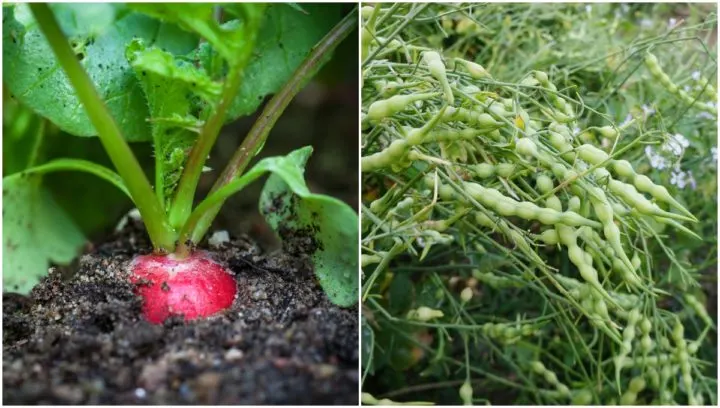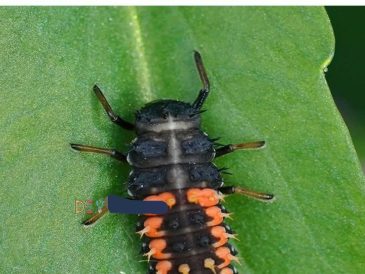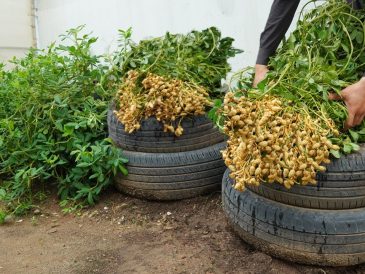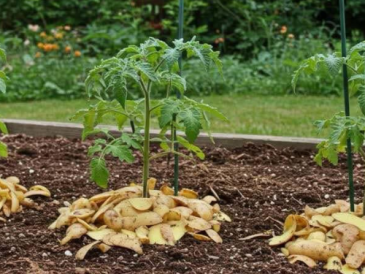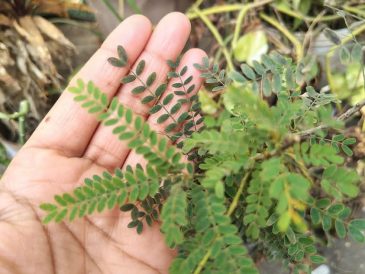Radishes are one of the easiest crops to grow. But if you’re only eating the root, then you are missing a trick!
Whether you have a large garden or only a windowsill, growing radishes can actually offer far more food than you might imagine.
Most people think that each radish seed will produce just one plant and that each plant will produce just one edible root. But if you consider alternative edible elements of each plant, you can get a far higher yield. Discovering radish pods and how to use them will open up a whole new range of opportunities and help you to expand your home growing efforts.
Want to make the most of all the space you have available? Let some radishes begin to set seed.
This is a great tip for the ‘lazy’ or low-maintenance gardener. All you have to do to get an abundant food source is sit back, do nothing, and let nature take its course.
About Radishes
In order to understand radish pods, it’s useful to discover a little more about radishes and their life cycle.
There are a number of different types of radish commonly grown in gardens – from winter Daikon radishes to round red radishes and French breakfast radishes grown during the spring and summer months. But all types have the same basic growing habits and lifecycles.
Radishes (Raphanus sativus spp.) are members of the Brassica family. Their lifecycles resemble the lifecycles of other plants within this plant family.
The seeds are sown, and young seedlings emerge. The plants begin to put on leafy growth and grow quickly. (Note – you can also add young radish leaves to a salad – the whole plant is edible.) Soon, the roots will begin to bulb out, forming globes or tubular shapes depending on which variety you are growing.
Most gardeners will wait until the roots reach the required size, then harvest. Sowing small numbers of radishes successionally will allow you to eat radishes throughout much of the year.
But if radishes experience heat stress, or are left in the ground for longer, once the roots are past their peak, the plants will begin to get leggy and wild and produce an abundance of flowers. Leave them a little longer still and those flowers will be pollinated and seed pods will begin to form.
What Are Radish Pods?
When we talk about radish pods, we’re talking about the green, slender seed pods that form on the radish plants. Botanically speaking, these elongated seed pods, common to members of the Brassica family, are known as siliques. Siliques have two fused carpels and usually burst open when ripe.
Botany aside, radish pods are crisp, juicy green pods that form after flowering. If left on the plant, these pods will form seeds inside and will turn dry and brown. But these pods are, when green and fresh, a delicious extra veggie in your garden.
Why Let Radishes Flower and Produce Pods?
Radishes that are allowed to flower – even before the pods arrive – are already doing good. As a gardener, you will benefit from the blooms. They may be small, but there are usually plenty of them. They not only look good, but also attract beneficial insects. Hoverflies, for example, are attracted to them and they will eat aphids and help control the population of this common pest.
Radishes can also help to repel certain pests – and make a great companion plant for a wide range of fruits and vegetables.
Then, once the pods begin to form, there is the edible yield to enjoy. When harvested for roots, each radish plant will produce only one. But a single radish plant, if left to flower, will produce tens or even hundreds of edible pods. So you might argue that this is a much better return on your investment!
What is more, leave some of the pods on the plant and you can wait for the seeds to form. Once the pods are dry and brittle, you can remove the mature seeds, dry them thoroughly, then store them to plant next year. If you’re new to saving your own seeds, then radishes are one of the easiest plants to start with.
Choosing Radishes For Pods
All radish varieties will produce edible pods. I usually sow Daikon and ‘black Spanish’ radishes in my polytunnel in the fall. What I do is leave one or two plants in the ground, and in spring, I harvest the pods.
I also sow red globe radishes and French breakfast radishes through spring and early summer. The few I leave give me edible pods to enjoy in the fall.

